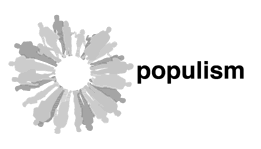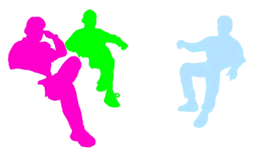Mauricio Dias and Walter Riedweg
The Brazilian artist Mauricio Dias and the Swiss Walter Riedweg have worked together since 1993. D&R almost always choose to work with a specific group of people – often a group that lives in the shadows of mainstream culture – on a border, whether inside the society they are situated in (e.g. immigrants or male prostitutes) or literally on a border (such as border police). Their research and collaborations are most often presented in the form of video installations that are concerned with crossing borders and encountering the Other. Central to D&R’s work is their belief that the dignity of each individual is based on one’s own personal perception of the world, and this is why personal stories are important. Their working methods are almost ethnographic in their interest in personal histories and how they relate to wider social, political and economical levels.
D&R do not claim to be able teach or make changes through their projects, nor do they claim to empathise with the Other that they confront, rather the aim is to change the level of communication, to cross the (imaginary) border between the we and the them and live out the desire to meet the Other and make representations that are free from fixed identities and prejudice.
For the making of the work Maximal Voracity, 2003, D&R casted eleven male prostitutes (chaperos) from Barcelona, most of who were immigrants. In interviews they talk about the chaperos’ relationships with their clients and their perception of their own sexuality. The work explores the relationship between sexuality and economy. Questions of illegality and the market, and the emotional and power tensions between the client and the chapero, for example, also appear.
The covering of the chaperos’ faces with masks depicting the artists themselves not only hides the identity of the chapero and levels the interviewer and interviewee, it also raises basic questions of identity and now it is constituted.
Mama, 2000, is a video that was part of a two part video installation first shown in the no-man’s land between San Diego in the USA and Tijuana in Mexico (a border crossing that is much used by illegal Mexican immigrants). It follows twelwe US Federal Immigration & Customs Officers and their specially trained dogs, and portrays the tension between their often motherly relationship to the dogs and their position of power and authority towards the border-crossers. Whereas Maximal Voracity was about subverting borders (national, sexual, identity related, etc.) the border police of Mama is concerned with the maintenance of borders.
By Eva May
"Maximal Voracity" (Dias & Riedweg © 2003) Installation view Photo: Dias & Riedweg
|









